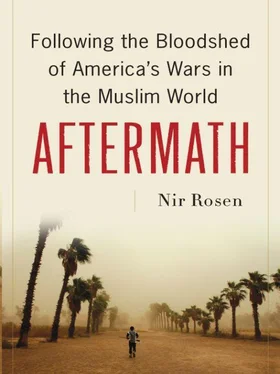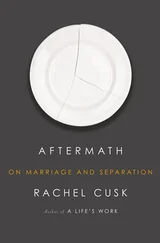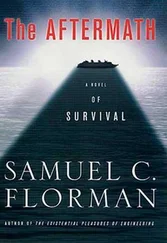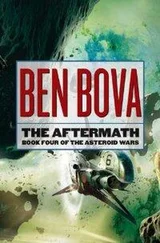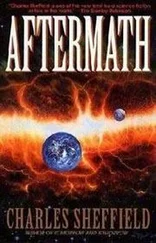Dora was undergoing a radical transformation that I could not clearly see when I visited in late 2007. Much of Dora, it seemed to me, was a ghost town. I walked down Sixtieth Street in an area called Mekanik with one Sunni militia. Tall concrete walls built by the Americans divided parts of it, separating warring factions. Lakes and rivers of mud and sewage choked the streets, with mountains of trash dividing them. Most of the windows of the one- or two-story homes were broken. The wind blew through them, whistling eerily. House after house and block after block were deserted, bullet holes pockmarking their walls, their doors open. Many were emptied of furniture; in others the furniture was covered by a thick layer of the fine dust that invades every space in Iraq. Apart from our footsteps, there was complete silence.
My guide was a thirty-year-old man called Osama, who grew up in this neighborhood. He pointed to shops he used to go to, now empty or destroyed, a barbershop that had belonged to a Shiite man, a hardware store that had belonged to a Sunni man. “This is all my neighborhood,” Osama told me. He wore jeans, a sweater, and a baseball cap, and had a slight baby face concealed by stubble. The previous U.S. Army unit had not been active in his area, he told me. “They were really cowards,” he said. “They let Al Qaeda and the Mahdi Army fight.”
We passed by the Ibn Sinna elementary school, which had served as a dividing line between Al Qaeda and the Mahdi Army. We continued and he showed me a Shiite mosque that in previous incarnations had been a cafe and before the war a Baath Party office. He pointed to the destroyed mosque. “The Mahdi Army was killing people here,” he said. “They were torturing people and the people destroyed it. They were shooting on our neighborhood. The Americans raided it; it was a great day. If I find somebody from the Mahdi Army I would kill him right away, not give him to the coalition forces.”
Osama had lost many friends and relatives in the civil war. When we drove past the nearby district of Baya, he pointed to the gas station. “The Baya fuel station is all Mahdi Army,” he said. “They killed my uncle here. He didn’t accept to leave. Twenty guys came to the house, the women were screaming. He ran to the back, but they caught him, tortured him, and killed him.” The Mahdi Army also targeted men with Sunni names. “I have three friends called Omar,” Osama told me, “all killed.”
Osama said the Mahdi Army freeze was “bullshit.” In the nearby area of Seidiya, he said, “two days ago they blew up the Sunni Ibrahim al-Khalil Mosque. The Mahdi Army is still killing people. Twenty days ago they killed three Sunni civilians who came back because they heard it was safe.” The Mahdi Army was Iran, he told me, the Quds Force. “The Mahdi Army is not listening to Muqtada and Muqtada is lying,” he said. “The Mahdi Army made Al Qaeda come here to defend people, but then Al Qaeda was worse. The government sucks; you know they are all corrupt. Then after a few months Al Qaeda became corrupt.”
Osama had been a translator working with the Americans; then he had moved on to sign lucrative construction and sanitation contracts with the American company KBR. Al Qaeda got wind that he worked as a contractor for the Americans, and he felt threatened. He and a network of friends of his in the neighborhood started acting as sources for the Americans, sometimes riding along in U.S. Army vehicles with their faces masked to point out suspects.
Osama and his men were first contracted by the American military under Lieut. Col. Jim Crider, who commanded the First Squadron, Fourth Cavalry of the Fourth Infantry Brigade Combat Team, First Infantry Division (1-4 Cav), during the surge in 2007 and 2008. They took over the East and West Rashid security districts in January 2007. In May 2007 they took over the northeast sector of East Rashid and attempted to apply the principles of the new counterinsurgency field manual.
“Anyone who was openly Shiite was already gone by the time we got to Dora,” Crider recollected. “We found a few people who were Shiite but posed as Sunni for their own protection. It was common for our troops to find three military-aged males with no furniture living in a house. That is not good enough evidence to detain them, so we would demand that they produce a legitimate rental contract within seventy-two hours or move out. More often than not, we would revisit the house to find it empty again.
“The government of Iraq back then was very sectarian. They were terrified that Sunnis would take back what they had gained.” Crider cited the installation of Dr. Bassima al-Jadri as head of the government’s reconciliation committee as one example. Jadri was a thirty-eight-year-old former senior official in Saddam’s military industry ministry, where she had worked on improving Iraq’s conventional weapons capacity. Even then she was connected to the Sadrists, and after the war she was in Parliament allied with Muqtada al-Sadr. Her formal relationship with the Sadrists began in 2004, when their opposition to Bremer intensified. They sought her out, and she agreed to advise them, meeting with religious and tribal leaders. She later established a relationship with the Dawa Party and became close to Jaafari and then Maliki. By this time her bodyguards had split off from the Sadrists. She was very suspicious of Sunnis and Americans, believing that neither wanted to allow Shiites to rule Iraq. She was very forceful, and when Maliki established his office of the commander in chief, meant to advise him on military matters, Jadri was put in charge of it, in part because of her fierce loyalty to him.
Under her the office developed a fearsome reputation for issuing secret sectarian orders, advising Maliki on military matters and overruling the Defense and Interior Ministries, circumventing the chain of command to order officers to attack targets. She helped Maliki create his own praetorian guard. Jadri wanted to purge all nonsectarian officers and those not loyal to the ruling Shiite parties while promoting sectarian officers by removing Sunni names from lists of recruits to the army and police. She viewed all Sunnis as Al Qaeda supporters. When Maliki established a national reconciliation committee, the Implementation and Follow-up Committee for National Reconciliation, Jadri was put in charge of it.
IN ITS FIRST MONTH in Dora the 1-4 Cav was attacked fifty-two times. Sunni militias used deep buried IEDs to destroy American armored vehicles. In response, starting in June 2007 Crider initiated a twenty-four-hours-a-day, seven-days-a-week presence in his area. This curtailed Al Qaeda’s ability to move about freely. People began to stay outside later into the night.
A fellow officer was reading David Galula’s 1964 treatise Counterinsurgency Warfare: Theory and Practice, which “emphasizes the importance of conducting a census right away,” Crider said. The 2-12 Infantry, from whom Crider adopted the idea, called it Operation Close Encounters. “I knew a good idea when I heard one,” he said, “so we began to conduct this operation daily in order to map out who lived in our neighborhood, what they thought, and who was not supposed to be there.” [1] Another soldier told me: “I spent a lot of time thinking about COIN prior to leaving the U.S. I read U.S. Army Field Manual FM 3-24 Counterinsurgency, as well as books by David Galula, Roger Trinquier, and Sir Frank Kitson, and thought long and hard about how to apply these lessons to our area of Baghdad, especially in terms of how intelligence was central to successful COIN. Of course, once we arrived in Baghdad, a lot of this was put aside, unfortunately, as we were taken away by events. Soldiers were being injured and our area seemed to be out of control, so the emphasis shifted from applying good COIN techniques to just responding to what was happening. We never really gained the initiative in that first area. Indeed, it took us about sixty days or so to really get back to the COIN basics that we had read about. Once we began to apply these lessons, things changed in our favor, and never turned back.”
The goal was also “to build a real relationship with the population one family at a time,” he would later explain in an article he wrote for Military Review . “We found that while people would not talk to us on the streets, they would often speak freely inside their homes. Since we went to every home, no one felt singled out. Galula points out that a census can serve as a ‘basic source of intelligence.’ We found that it was a tremendous source of intelligence that gave us an in-depth understanding of how people felt. We came to understand that Al Qaeda in Iraq was supported only by a small minority of the population. We discovered issues around which we could build an alliance based on a relationship of trust and respect. We could shape our talking points, information operations, and psychological operations to have the effect we wanted because we knew our target audience well.”
Читать дальше
